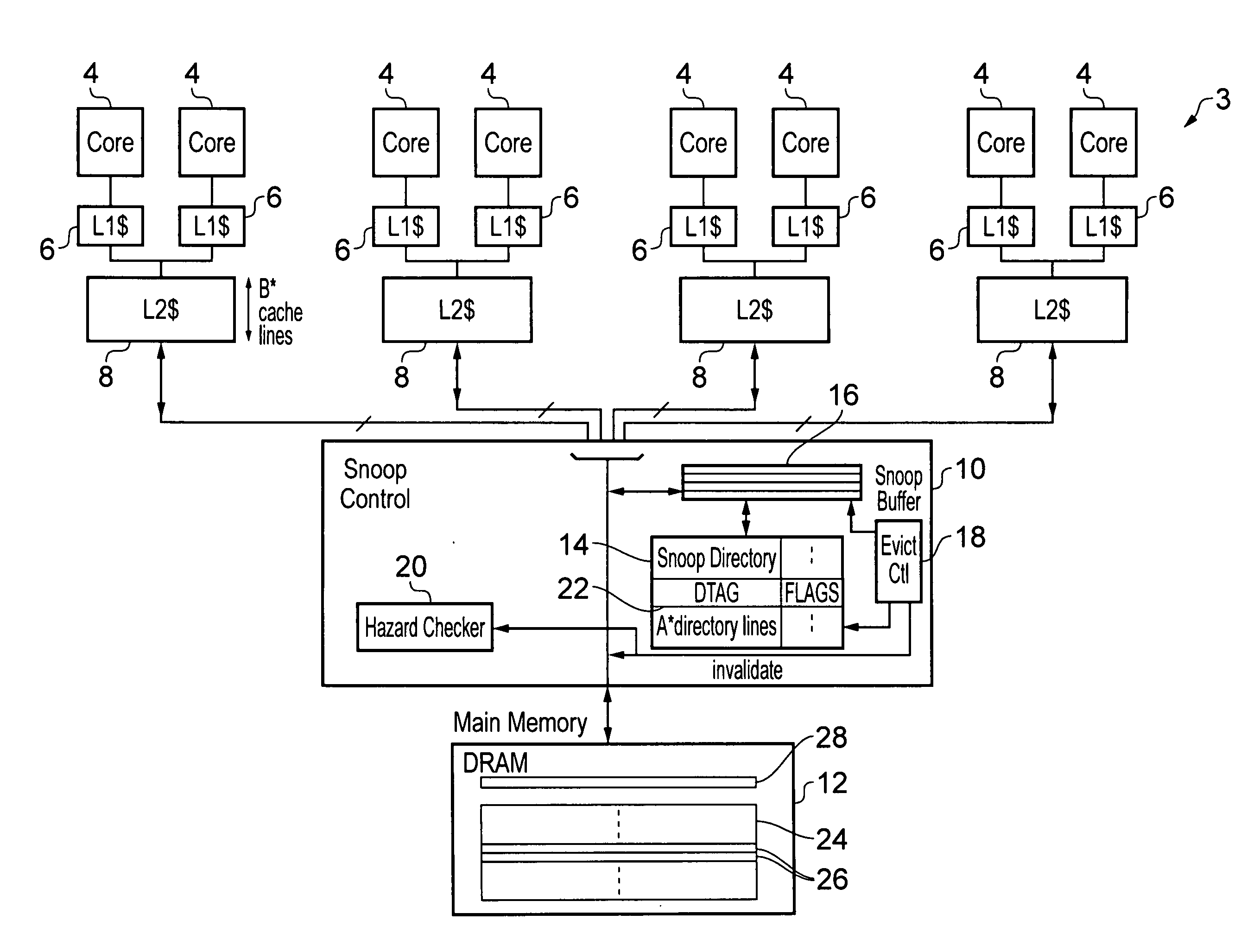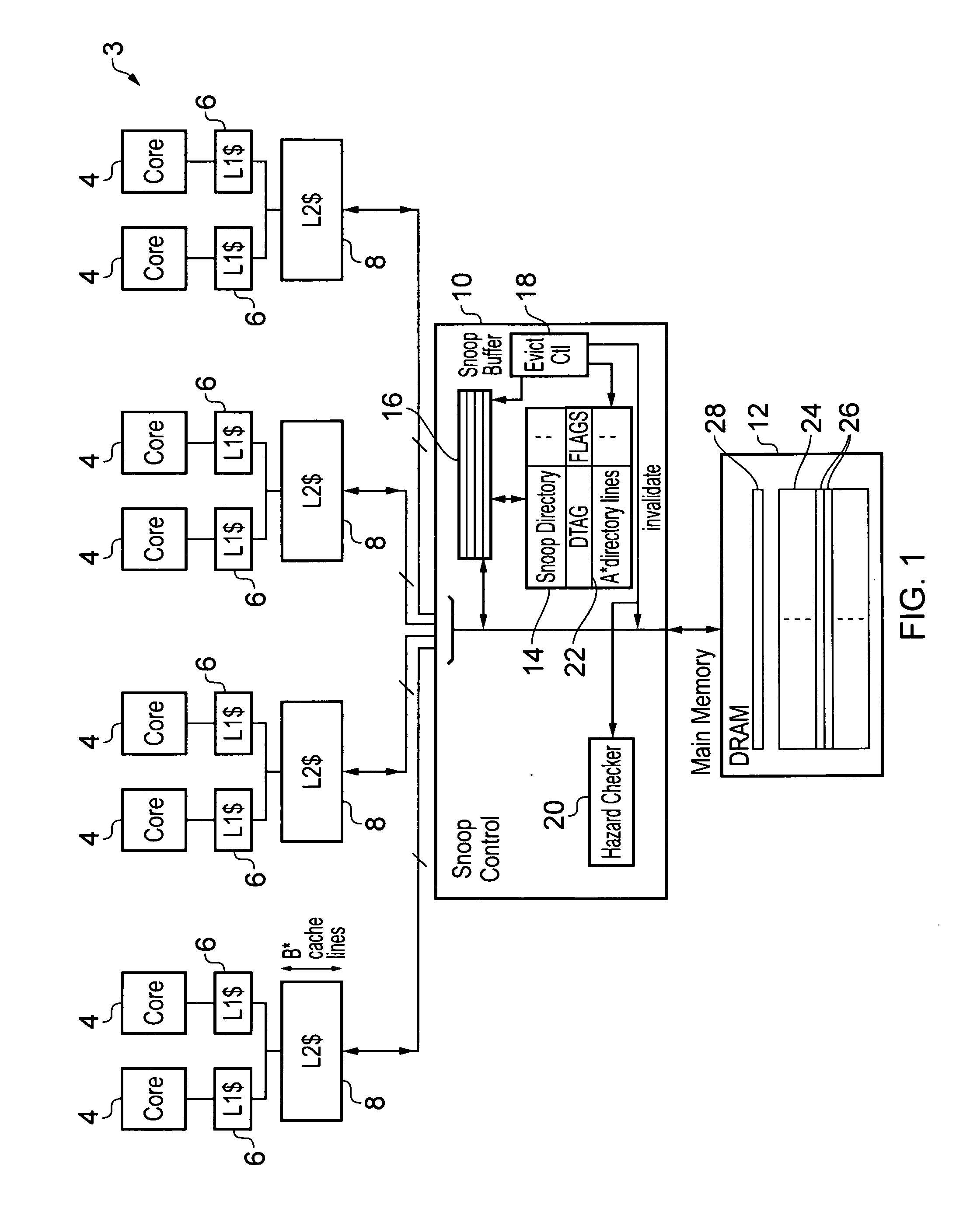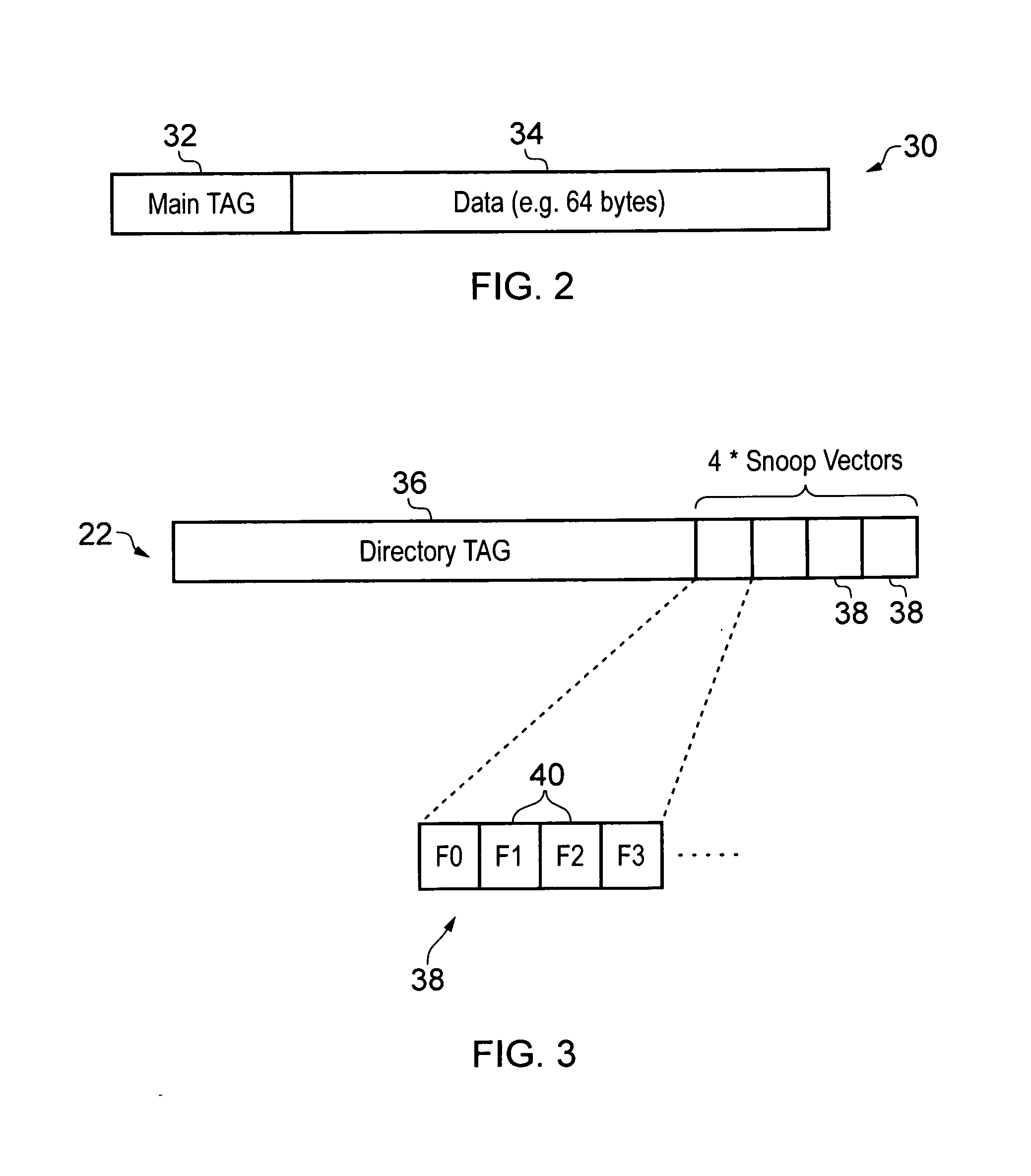Data coherency management
a data coherency and management technology, applied in the field of data processing systems, can solve the problems of reducing the amount of overhead, reducing the amount of snoop request traffic generated, and increasing the amount of snoop request traffic, so as to reduce the number of snoops, avoid unnecessary snoop requests, and improve efficiency
- Summary
- Abstract
- Description
- Claims
- Application Information
AI Technical Summary
Benefits of technology
Problems solved by technology
Method used
Image
Examples
Embodiment Construction
[0039]FIG. 1 schematically illustrates a data processing system 3 that supports symmetric multiprocessing. Eight processor cores 4 are each provided with respective level 1 cache memories 6 (there could, in other embodiments, be two level 1 caches per core—one for data and one for instructions). The level 1 cache memories 6 for a pair of cores 4 share a level 2 cache memory 8. In this example embodiment, an inclusive snoop directory memory 14 that is part of a snoop filter serves to manage data coherence between the level 2 cache memories 8 (plurality of main cache memories).
[0040]Snoop control circuitry 10 is connected to the level 2 cache memories 8 and serves to receive memory access requests issued to a main memory 12 when a cache miss occurs within one of the level 2 cache memories. The snoop control circuitry may also receive other memory requests, such as coherent writes or cache maintenance operations (invalidate, clean etc). The cache misses trigger a cache line fill with d...
PUM
 Login to View More
Login to View More Abstract
Description
Claims
Application Information
 Login to View More
Login to View More - R&D
- Intellectual Property
- Life Sciences
- Materials
- Tech Scout
- Unparalleled Data Quality
- Higher Quality Content
- 60% Fewer Hallucinations
Browse by: Latest US Patents, China's latest patents, Technical Efficacy Thesaurus, Application Domain, Technology Topic, Popular Technical Reports.
© 2025 PatSnap. All rights reserved.Legal|Privacy policy|Modern Slavery Act Transparency Statement|Sitemap|About US| Contact US: help@patsnap.com



